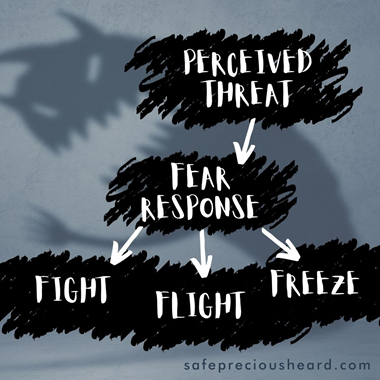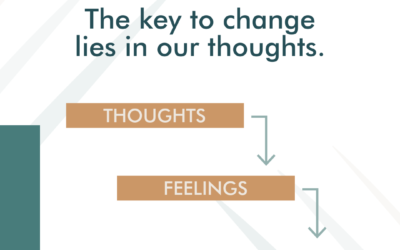Fear is driving your child’s behavior. Do you believe this statement? Embarrassingly, it took me years to truly believe and understand how fear could possibly be driving my son’s behavior. He seemed to have an insatiable appetite for power and control. I didn’t see fear. I saw anger and self confidence in his actions- that his way was always the way. Wrongly, I interpreted his challenging behaviors as being driven by disrespect, defiance and deceit. I couldn’t see fear as the underlying and driving force.
Fear affects behavior. What does their lying, cheating, stealing, hitting, screaming, irritability, running away, withdrawal, lethargy… have to do with fear? A helpful starting place for understanding these behaviors in relation to fear is seeing these behaviors as learned survival skills activated by the fight, flight or freeze (FFF) response. Children that have experienced great loss and trauma have a hyper-vigilant FFF response. This response mechanism is designed to cause our body and brain to respond to a threat in an instant without having to think. This allows us to survive in the midst of danger. The difficulty with children who have experienced early childhood trauma is even if they are now safe in your care, they’re brains are still wired on survival mode, it’s literally their default mode.
There is no time to think, only react.
A threat, even if it’s a perceived threat, is acted on in a split second. Once the brain perceives a threat it instantly directs attention away from the rational, logical areas of the brain and prepares the body to take action (fight, flight or freeze). These brain and body reactions happen before there is even a chance to think through and evaluate the situation. In children who have experienced trauma this fear response is overdeveloped. Their fear response is highly attuned to pick up on any and all perceived threats. This is why their reactions can happen so quickly. Their FFF response is triggered in an instant and they literally cannot think before they react. In fact, most likely, they are not even aware of their own actions and impulsiveness. This becomes apparent when you ask them why they said what they said or did what they did… most likely you will hear them reply, “I don’t know.” Because they don’t know! They weren’t thinking! They were reacting! Oftentimes our children won’t even be able to accurately remember how they reacted. Again, this is because when the FFF response is activated, the brain purposefully doesn’t think, it reacts in a split second to the perceived threat with fear based survival behaviors.
F.E.A.R. = False Evidence Appearing Real.
Our child’s hyper-attuned, hyper-vigilant and hyper-active fear response may have served them well in their old environment but they can’t just shut it off. In the past, these “normal” survival skills protected them from being hurt or harmed. This is how their brains adapted. Their mind literally became hard wired to react this way. What makes it so hard for us, as parents, is that our children are still responding instinctively to perceived threats. Even though these automatic fear responses may no longer be helpful in their current living situation they are not able to override this ingrained pattern of responding. Their sensitivity to perceived threat is now a maladaptive behavior meaning, they cannot distinguish between real and false threats. These reactions probably lead to very negative consequences in the present because most adults do not recognize them as maladaptive fear responses. They attribute these behaviors to attributes like disrespect, ungratefulness or disregard.
What do survival behaviors look like?
I guarantee you already know what these behaviors look like. They are the challenging behaviors that drive you crazy! These behaviors probably baffle you, frustrate you and leave you wondering what just happened. One minute your sweet, precious kid is laughing and having fun – and the next minute your kid is yelling, spitting and kicking. They went from calm to rage, from wanting to be close to you to running away or from engagement to withdrawal. It’s helpful to recognize and identify how these fight, flight or freeze responses present themselves behaviorally. I’ve broken down each of the fight, flight or freeze responses and noted some typical corresponding behaviors. In no way is this an exhaustive list, my intent is to help make it clear how their fear response presents as challenging behaviors.
Fight (attack) responses:
lash out, yell, defend, hit, rage, demand, tantrums
Flight (avoid) responses:
run away, hide, stonewall, hyperactive, deflects, cutting
Freeze (check out) responses:
zones out, stares blankly, collapse, unresponsive
Making a paradigm shift is key to helping our kids. Recognizing behaviors as survival responses, not willful disobedience, helps us see how fear is driving our child’s behaviors. When we see our child’s outbursts as fear based reactions, we can begin to respond with compassion rather than with consequences. We can begin to ask ourselves, what threat is my child perceiving? We can begin to look for triggers in the environment or triggers we may have unintentionally provoked by our actions. Changing the way we identify our child’s behavior allows us to change the way we respond. Once we begin to conceptualize fear as the driving force behind the behavior, when can we begin to ask the question: What does my child need to feel safe at this moment in order to avoid escalation of their fear response?
What behaviors can you identify as fear based? Reflect on the last episode you and your child experienced. Try to reframe the situation from their perspective, understanding how fear (including a perceived threat) shuts down the thinking brain and instantly turns on FFF responses. Can you identify their fight, flight or freeze behavior? Can you take it a step further and determine their perceived threat? Becoming skilled at answering these two questions will enable you to gain a deeper sense of empathy and compassion for your child and help you respond differently. Understanding how trauma affected my child’s brain helps me make sense of these challenging behaviors. My own preconceived ideas, expectations and life experiences hinder my ability to see things from a trauma informed perspective. The more I learn, the more convinced I am of my own need to change.





0 Comments